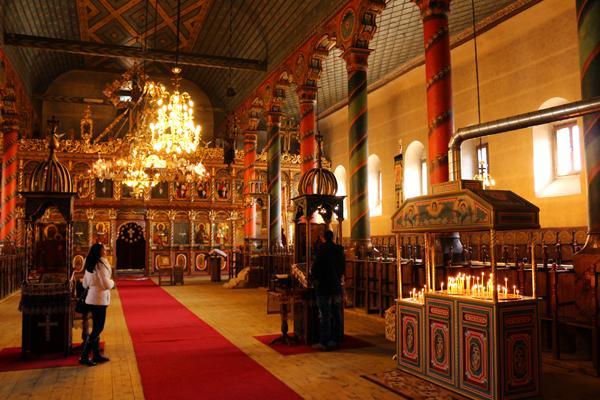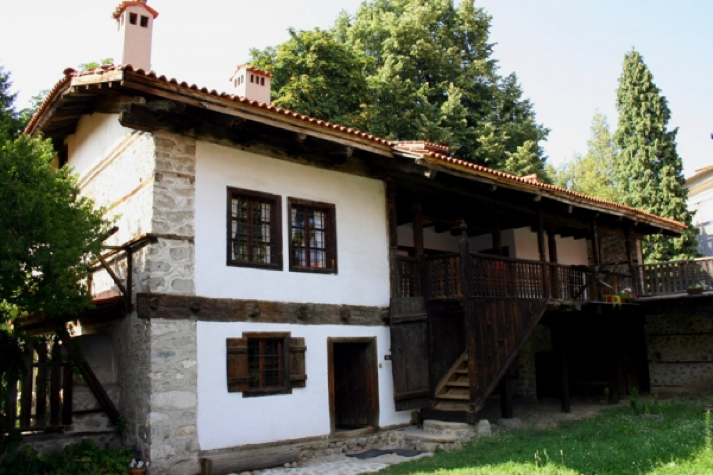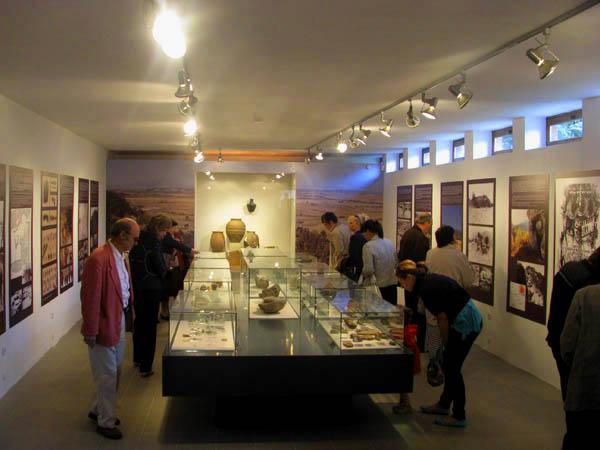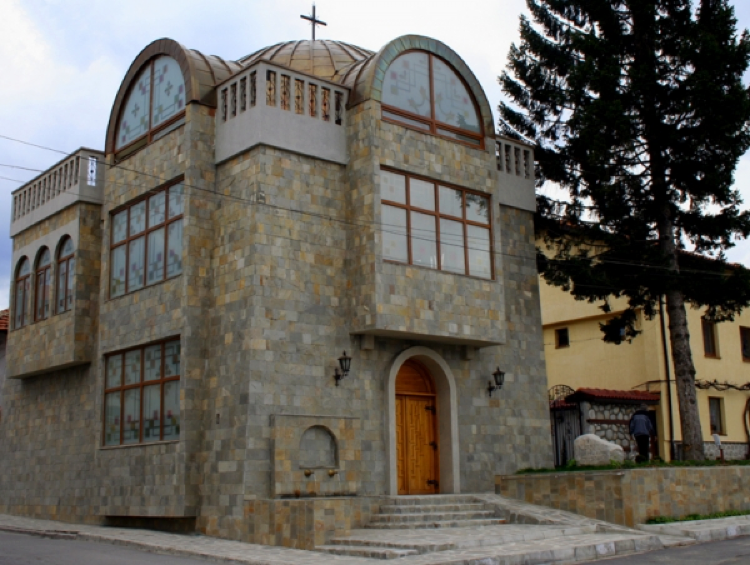Did you know that in the Bansko area there are over 140 architectural and historical monuments and more than 130 registered archaeological finds? And did you know that 7 of the sites that are located in the resort town are of national importance and are included in the 100 national tourist sites?
Bansko is not only a ski resort, beautiful views, delicious cuisine and cozy hotels. Bansko is a town with Bulgarian Renaissance spirit and traditions, which the people guard zealously even today, making care that the history of the town is not forgotten.
The little town has something to be proud of. Here were born and lived more than a few great writer of the Bulgarian national revival; here, Paisiy and Vaptsarov have been raised and the famous Bansko Art School has been developed…
Yes, Bansko has something to be proud of and something to show to the thousands of visitors who choose Bansko for their vacation.
If you have decided to spend your winter skiing vacation in Bansko, you may spend a few hours of your time exploring the museums in the town.
Museums in Bansko, which you should absolutely visit
House-museum of Nikola Vaptsarov
With the transformation of the house in which Nikola Vaptsarov was born and raised in a museum, the museum work began in the town. This happened in 1952, and over the years the museum was reconstructed several times — in 1960, 1979 and 1992.
It is interesting that in the initial arrangement of the museum exposition the mother and sister of the poet participated as tour guides and the last reconstruction was Valo Radev’s idea.
Nowadays the house-museum of Nikola Vaptsarov is not only among the most visited attractions in Bansko, but also one of its biggest symbols. Anyone who decides to visit the museum can get closer not only to the great poet’s poems, but also to his life.
The museum is located in the heart of Bansko (on the central square) and operates daily from 8.30 AM to 1.00 PM and from 2.00 PM to 6.00 PM. The house was declared a historic cultural monument of national importance in 1973, it is included in the list of 100 national sites and you can get a stamp when visited.
Saint Trinity Church
The Saint Trinity church is a three-nave pseudo-basilica built in 1835 on the initiative of Lazar German, called by the people ofBansko Dedo Lazko. The church has a length of 44 m, a width of 12 m and an area of 1,200 sq.m.

In 1865, a 30-meter bell tower was erected to the temple, and in 1895 four bells and a clock were mounted in the bell tower, which shows the exact time to the people of Bansko even to this day.
You will say that there are many such churches in Bulgaria, but you will be a little bit wrong because the Saint Trinity church has a really exciting and fascinating story…
And it, began around 1800 — a time when Bulgaria is still under Ottoman domination, but also a time when “the heads rise and do not want to keep quiet.”
At the beginning of the 19th century, Bansko thrives on trade, and rich tradesmen already have several offices in different countries in Europe. Bansko is thriving and, naturally, people need their own Christian temple to build and to go to.
Little by little the dream of the people of Bansko of the church became ripe and there began an initiative of money raising, opening a plot on which to build the church and of course obtaining a permission from the Turkish authorities to build a temple.
The initiative to raise funds belonged to the rich merchant Lazar German, who gave not only money and efforts for this work but also to his life. Twenty whole years did the people of Bansko struggle to build their own church, and finally the money was collected, the site for the building of the church was secured (Lazar German and the father of Neofit Rilski gave their family lands to the church) and in 1835 the church was built.
It is beautiful, white, spacious, and with its interior decoration was done by Dimitar Molera, who crafted a unique gold-plated wooden iconostasis, and on the wooden paneling of the ceiling he painted a starry sky.
Today the Saint Trinity church is among the most visited attractions in Bansko by tourists who come to vacation or just pass through the town.
If you come to Bansko, you should not miss to visit the Church of the Saint Trinity, you really will not regret sparing some time.
The church is among the 100 national tourist sites and you can see it every day from 8.00 AM to 6.00 PM.
House-museum of Neofit Rilski
The house where Neofit Rilski was born and lived until 1811 was turned into a museum in 1981 and today it is a historical monument of national importance.

The house is built in the typical for Bansko Bulgarian Renaissance style, on two stories, with a spacious yard and high walls. The exposition, which all visitors can have a look at, is extremely rich and tells both about the life in Bansko in the 18th century and the many years of educational activity of Neofit Rilski.
The museum has a working time from 09.00 AM – 12.00 PM/1.00PM – 5.30 PM (except Tuesdays). It is part of the 100 national sites and you can get a stamp from the house-museum of Nikola Vaptsarov.
The Velyanova House
The Velyanova House is an extraordinary creation, a little architectural jewel that impresses everyone who stops on its doorstep. The history of this house is extremely interesting and helps us to get close to the spirit of Bansko during the Bulgarian Renaissance.
And the story is the following…
At the time when the Saint Trinity church was being built in Bansko, the icon-painter Velyan Ognev arrived with his family. It is he who was tasked with the carvings that today impress anyone who enters the temple.
After finishing the work on the church, the people of Bansko give him a plot as a token of gratitude, so that the master could build a home for his family.
And icon-painter Velyan not only builds a home but paints it with his hands of gold in a way that nowadays fills everyone with admiration.
Today you can enjoy the traditional arrangement of the Bansko houses from the Bulgarian Renaissance period and the beautiful murals and carvings of Velyan Zograf.
If you have time while skiing in Bansko, take the time to explore this truly unique house-museum.
The Velyanova House has been declared a real cultural property of national significance and also ranks among the biggest attractions in Bansko.
For information only: more than 80% of the tourists who chose a Christmas holiday in Bansko in 2017 visited the Velyanova House while staying in different hotels in the town.
Historical-ethnographic museum Radonova House
The ethnographic museum is the newest museum that was discovered in Bansko, but its visit is worth it totally. The museum is housed in a Bulgarian Renaissance house built in the early 19th century, which was owned by the wealthy Bansko family of Hadzhivalchevi.

In 2007, Bansko municipality decided to turn the house into a museum, where it organizes a rich ethnographic collection that tells the life and lifestyle of Bansko people over the centuries.
The Radanova House is a monument of local significance and can be visited from 09.00 AM-12.00 PM/1.00 PM-5.00 PM every day of the week without Sundays and Mondays.
Church of the Holy Virgin
Although not as popular as the other attractions in Bansko, it is good if the church of the Holy Virgin finds a place in your list of visits.
Built in the 16th-17th centuries on the foundations of another church, which was most probably burned down by the invasion of the Ottomans, the church impresses with its atypical construction, which puzzles the specialists even to this day. It is unknown why the church builders first erected the walls of the church and only afterwards built (or transported from somewhere) the altar.
The precise work on the iconostasis impresses with its details. Unfortunately, in 1958 a fire raged in the church and the flames consumed the icons, the cross and part of the altar.
If you decide while you are on vacation or skiing in Bansko to see the church, it is located in the town’s cemetery.
Permanent exhibition of the Bansko Art School
The exposition is situated in the Hilendar convent which is the oldest dated building in Bansko. If you take the time and visit the exhibition, you will be able to see the works of the masters of the Bansko Art School which ranks among the biggest schools that contributed to the Bulgarian national art. Here, you can see icons, carvings, frescoes made by the masters of the Bansko school.
The exhibition has a working time from 09.00 AM- 12.00 PM/1.00 PM- 5.00 PM (Sundays and Mondays it is closed).
St. Paisiy Hilendarski spirtual and historical center
In 2008, a spiritual and historical center was built at the site of Paisiy Hilendarski’s house of birth which tells about the life and activity of the great witer of the national revival. In the historical center you can see an exact copy of the cell of Paisiy Hilendarski, in which he wrote Slavonic-Bulgarian History, as well as a copy of the chapel St. Ivan Rilski where he prayed.

The spiritual and historical center can be visited from 09.00 AM-1.00 PM/2.00 PM- 5.30 PM from Tuesday to Saturday (Sundays and Mondays it is closed).
The people of Bansko are proud people, people who guard their history and for whom it is important that the lives and activities of their great fellow citizens are not forgotten. That’s why the museums that they support with so much love are some of the biggest sights and attractions in Bansko.
And we, who only pass through there, have the chance and the pleasure to look at them and remember that we are Bulgarians and we should be proud that Bansko has given us so many great people.